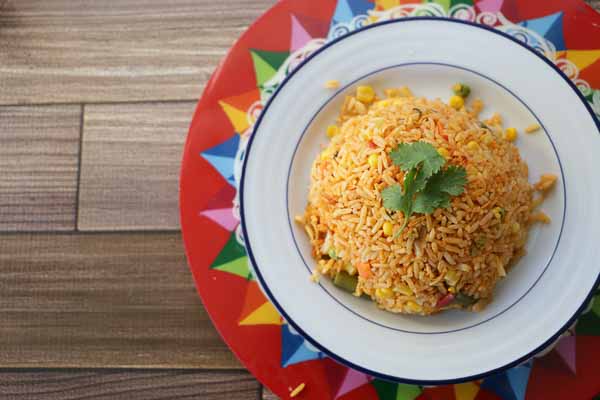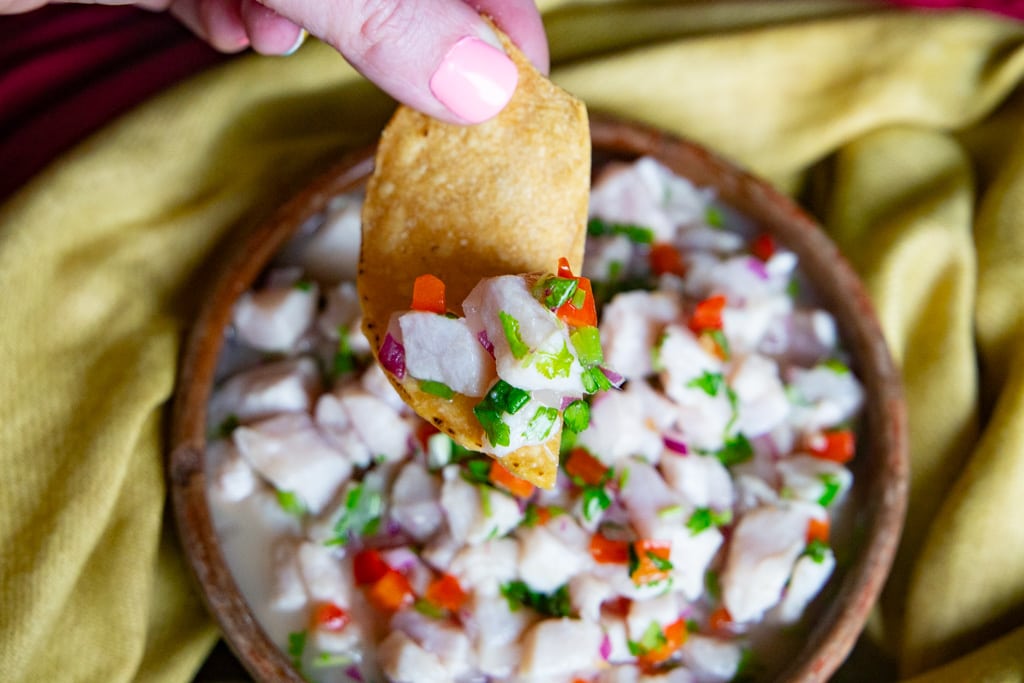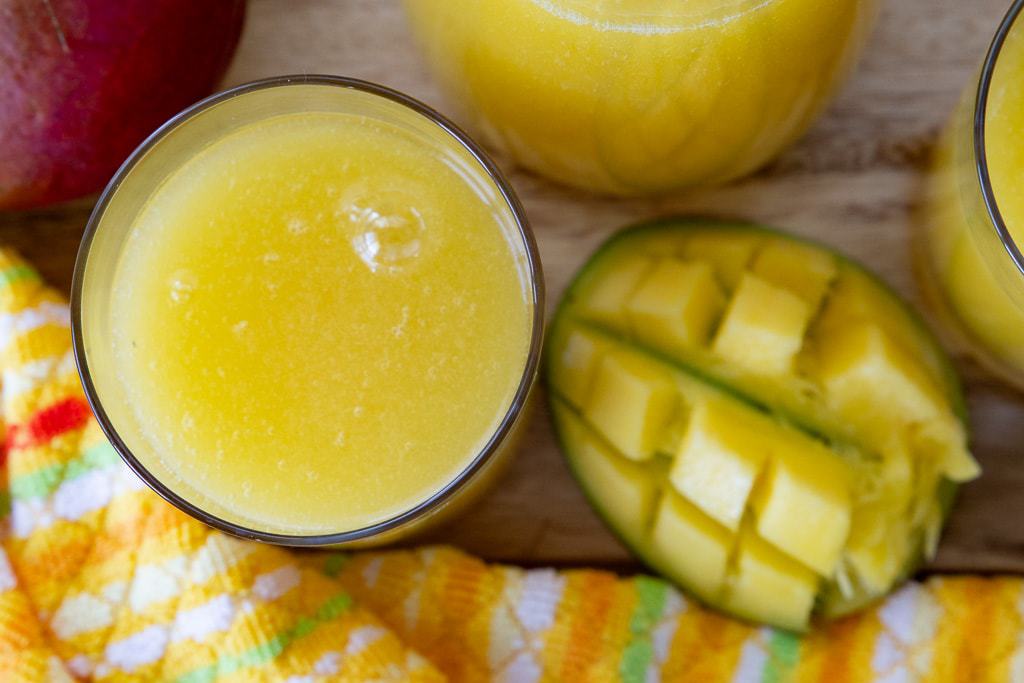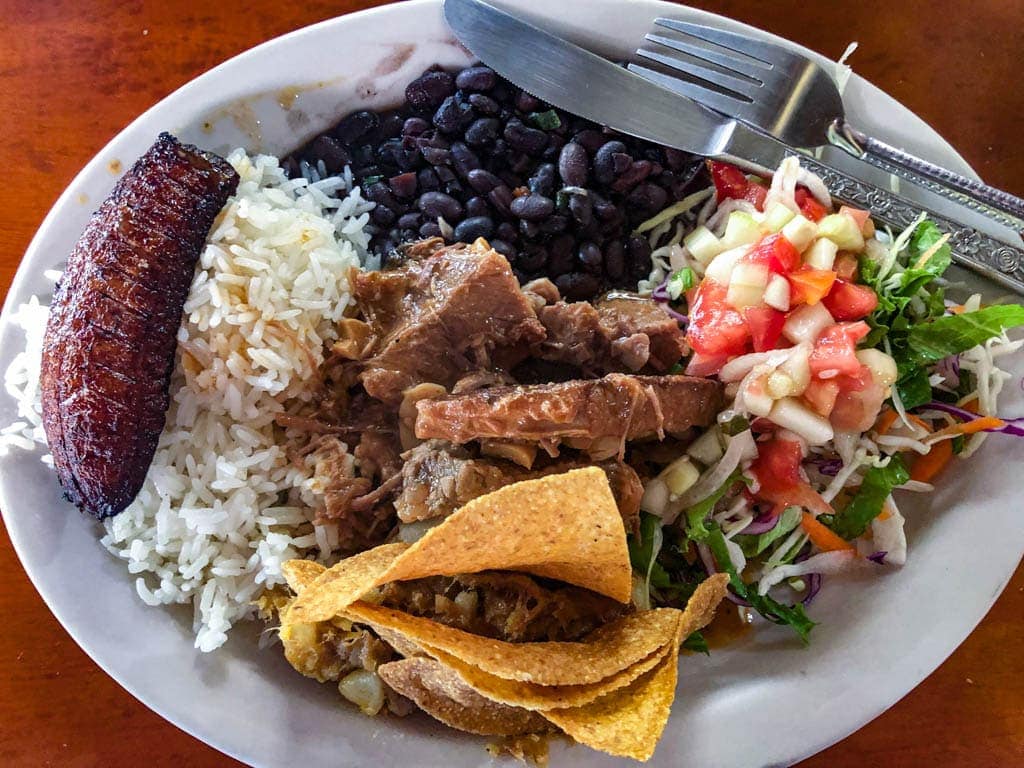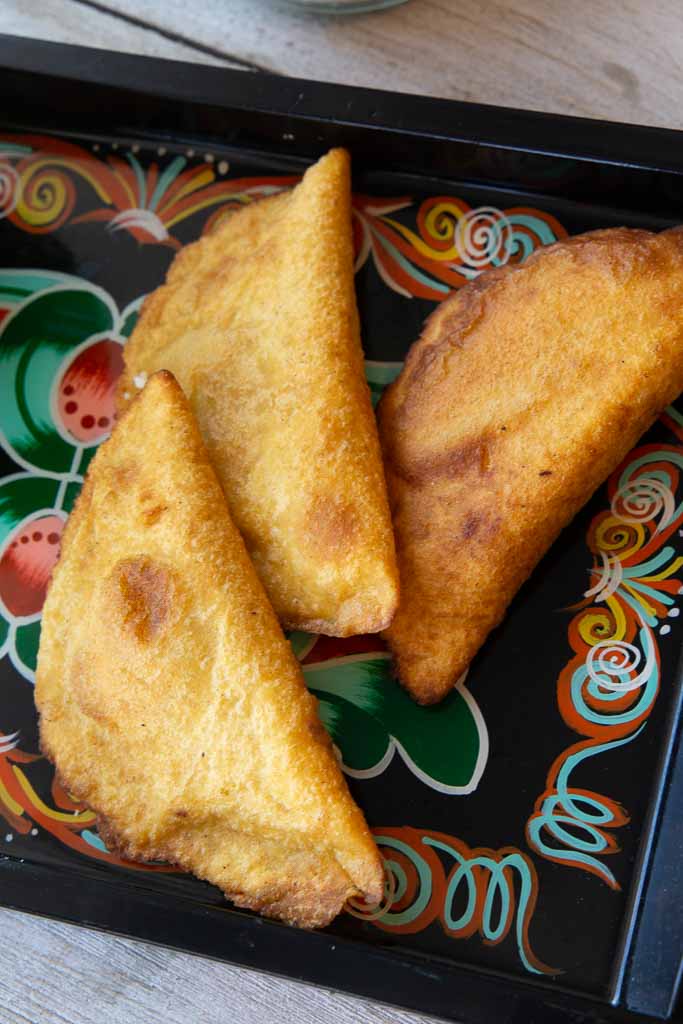Authentic Costa Rican Plantains Recipe
This post may contain affiliate links.
These fried ripe plantains are a very easy Latin appetizer or simple side dish that adds a touch of sweetness to almost any meal. Costa Rican plantains (plátanos maduros) are one of the most popular dishes in the country and are eaten for breakfast, lunch, and dinner.
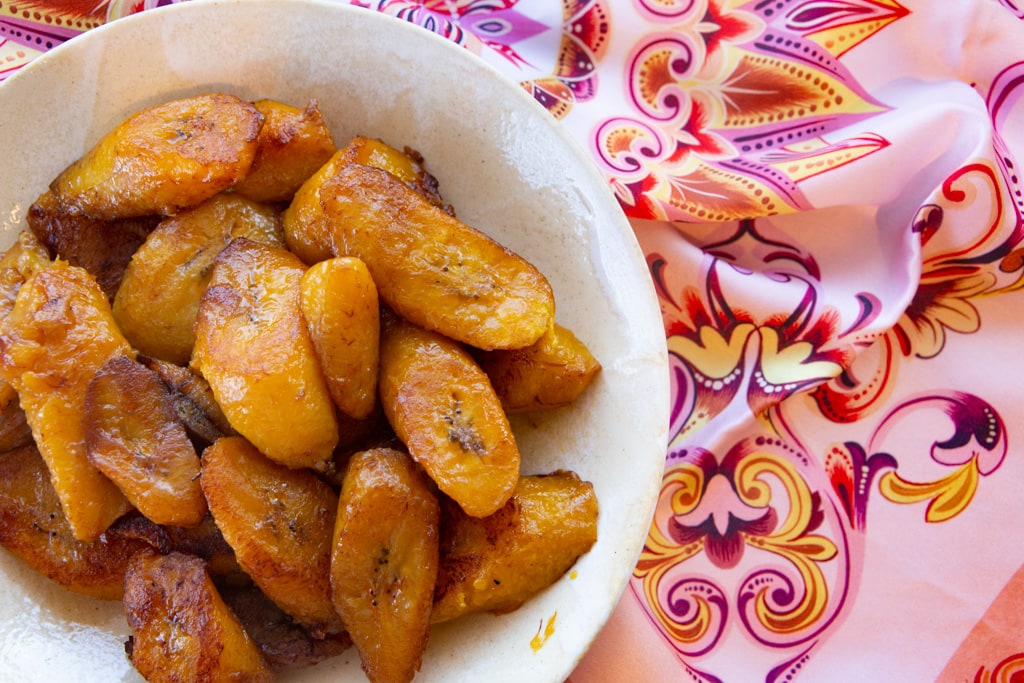
About Costa Rican Plantains
Plantains, the starchier, tougher cousins of bananas, are a beloved food among Costa Ricans- which is no surprise as they are popular throughout Latin America and around the world. There is a myriad of recipes for all types of plantains- from boiled green plantains to smashed green plantains called patacones and even platanos en gloria– which are baked ripe plantains served with melted cheese and/or natilla (Costa Rican sour cream).
These fried plantains are often referred to as maduros because they are mature – or ripe as we more commonly say in English.
The riper the plantains, the sweeter their overall flavor will be. That means the secret ingredient for this recipe is patience- patience in waiting for the plantains to become perfectly ripe.
You know plantains are ripe when the skin is nice and yellow in color, they’re a bit soft and maybe even have a few black spots.
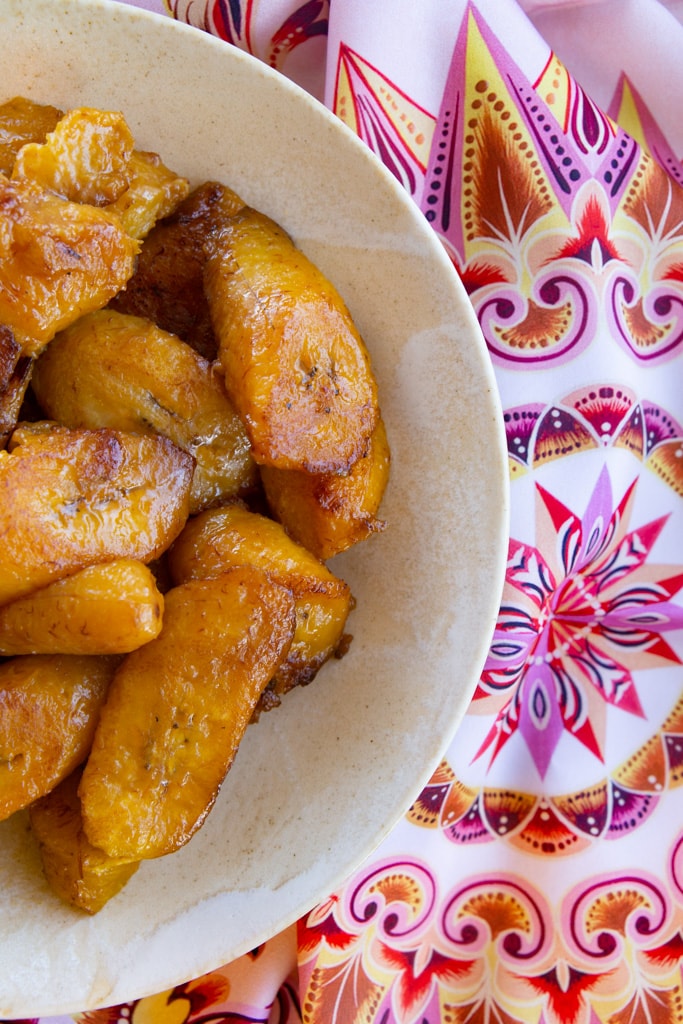
This sweet plantain recipe results in an almost caramelized taste as you lightly fry the plantains close together and some of the residual moisture from the fruit becomes almost honey-like in texture.
Costa Rican plantains are most often with gallo pinto at Costa Rican breakfast and as an essential part of the Costa Rican casado for lunch.
RELATED POST: Costa Rica Food-30+ Foods To Try In Costa Rica
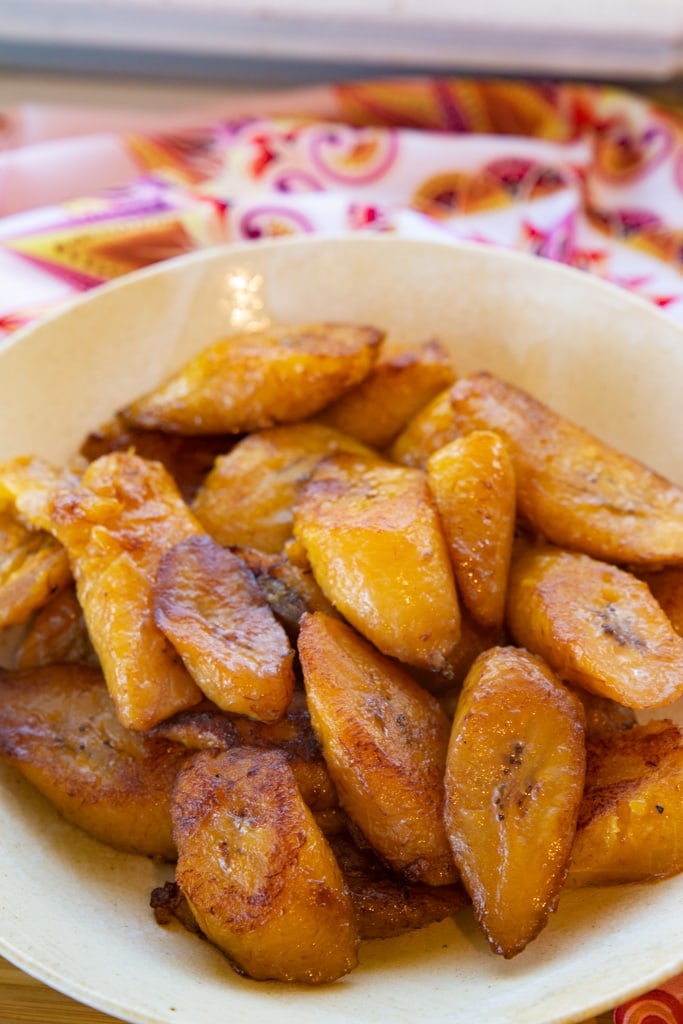
Costa Rican Plantains Recipe
Printable recipe below
Ingredients
- Ripe plantains
- Vegetable oil
- Frying pan
Instructions
Wash and peel the ripe plantains. Cut them into fairly thick slices (about ½ inch-thick rounds) or diagonals depending on your visual preference. They taste the same either way.
Pour the oil In a small frying pan (I like to use the same cast iron skillet for all my frying)- making sure it’s about 1 inch deep. You do not need to completely cover the plantains with oil. Heat over high heat until the oil is bubbling.
Once your oil is simmering, reduce to medium heat and gently place your pieces of plantain into the skillet in a single layer and fry for about 1 and 1/2 minutes per side, turning them over once they become golden brown. (These guys will turn black and burn quickly, so be sure to keep an eye on them.)
Remove the cooked plantains from the hot oil with tongs or a slotted spoon, placing them on a paper towel to drain off excess oil. Eat hot, room temperature, or cold.
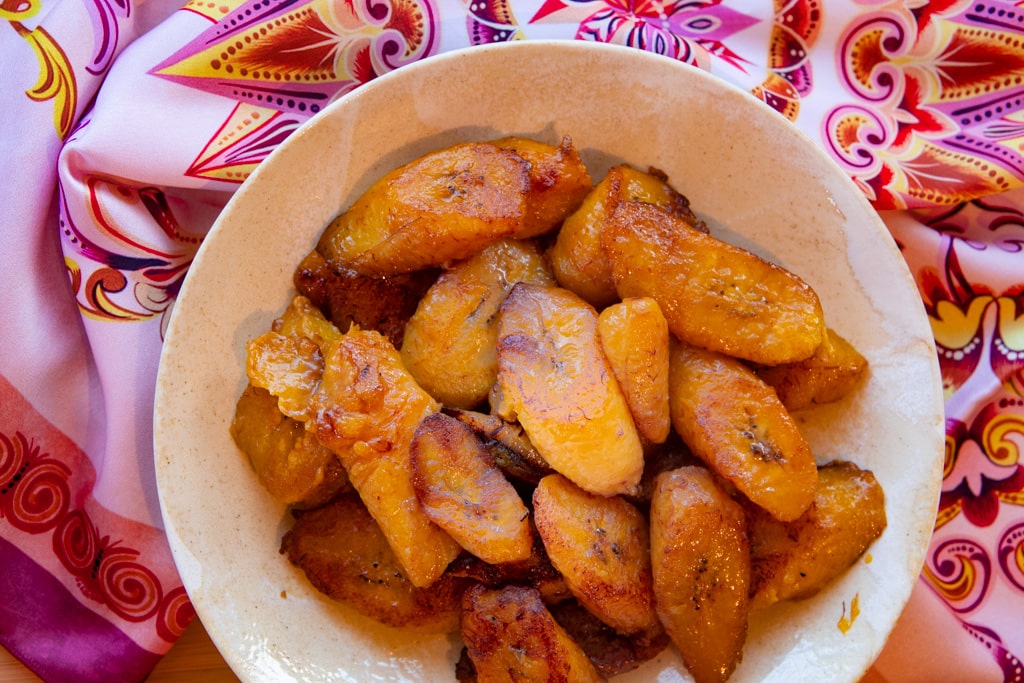
Substitutions
You can use any type of oil for frying. I like to use coconut oil for a bit of a tropical flavor. If you like, kosher salt can be swapped in for regular table salt when it comes to seasoning your fried plantains.
Similarly, if you are planning on serving the fried plantains as part of a dessert, they can be sprinkled with sugar instead of salt.
Variations
You can fry these Costa Rican plantains in a large skillet as well and place the plantains farther apart. They tend to be a bit less caramelized that way- the texture is a bit drier.
A popular variation of this recipe in Costa Rica is a dessert plantain often eaten during coffee hour- sprinkle cinnamon, and sugar (or tapa de dulce) on top for an extra sweet treat.
These plantains can be baked with cheese and served as a traditional “platanos en gloria” as well.
You can make ripe plantain chips as well by using a mandolin slicer to slice the plantains into very thin rounds and then flash frying and allowing them to cool.
We also love to wrap the plantains in a fresh tortilla for a snack.
Serving Suggestions
These sweet and crispy Costa Rican plantains can be served as part of a Costa Rican casado dish along with gallo pinto, salad, tortillas, and shredded beef.
They’re also tasty when served with salsa and sprinkled with a little queso fresco.
Believe it or not, another (unconventional) way to serve your fried plantains is on top of vanilla ice cream– it’s the perfect combination of sweet and crunchy!
Join me over at my favorite place- Instagram.
Printable Recipe
Costa Rican Fried Plantains Platanos Maduros
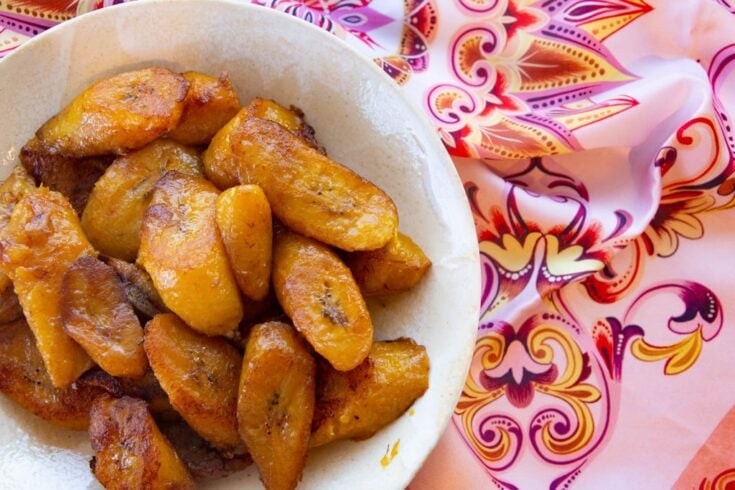
These fried ripe plantains are a very easy latin appetizer or simple side dish that adds a touch of sweetness to almost any meal. Costa Rican style plátanos maduros are one of the most popular dishes in the country and are eaten for breakfast, lunch and dinner.
Ingredients
- 2-3 ripe plantains
- vegetable oil
- Frying pan
Instructions
- Wash and peel the ripe plantains. Cut them into fairly thick slices (about ½ inch thick rounds) or diagonals depending on your visual preference. They taste the same either way.
- Pour the oil In a small frying pan (I like to use the same cast iron skillet for all my frying)- making sure it’s about 1 inch deep. You do not need to completely cover the plantains with oil.
- Heat over high heat until the oil is bubbling.
- Once your oil is simmering, reduce to medium heat and gently place your pieces of plantain into the skillet in a single layer and fry for about 1 and 1/2 minutes per side, turning them over once they become golden brown. (These guys will turn black and burn quickly, so be sure to keep an eye on them.)
- Remove the cooked plantains from the hot oil with tongs or a slotted spoon, placing them on a paper towel to drain off excess oil. Eat hot, room temperature, or cold.
Pin it!
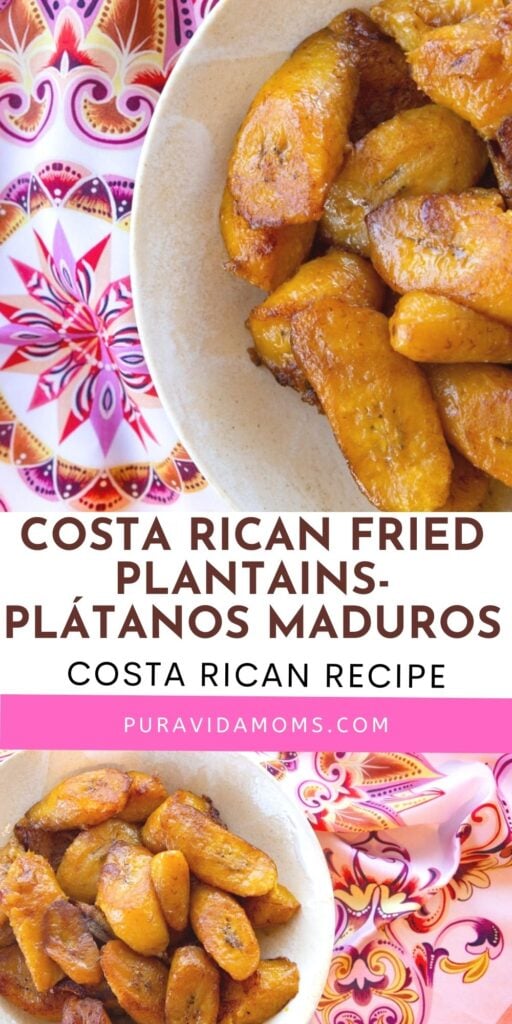

Christa Jimenez
Welcome! I’m Christa, a Spanish teacher married to a handsome Costa Rican and mother of two bilingual daughters. We’ve spent over 25 years living in and traveling to Costa Rica with our daughters, and this website is my love letter to all things Costa Rica- and to bilingual parenting too. You can read my full story here. Thanks for stopping by!

